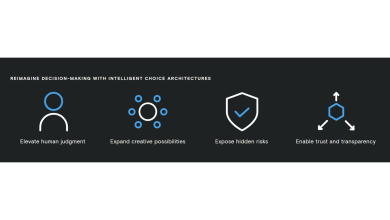When standard equipment just won’t cut it, that’s when you realize why premium attachments exist in the first place. Premium forklift attachments aren’t just expensive versions of regular attachments – they’re engineered solutions for applications that push material handling equipment to its absolute limits. Whether you’re dealing with loads that weigh tens of thousands of pounds, working in environments that destroy ordinary equipment, or handling materials so valuable that any damage is unacceptable, premium attachments provide capabilities that simply aren’t available in standard equipment. The engineering that goes into these attachments often involves custom materials, specialized manufacturing processes, and design features that solve problems most operations never encounter.
Smart Materials Meet AI: The Future of High-Tech Production
Premium attachments use materials you won’t find in standard equipment. Instead of basic structural steel, they might use high-strength alloys, heat-treated components, or specialized steels with specific properties for the intended application. These materials cost significantly more but provide performance characteristics that justify the expense in demanding applications.
The manufacturing processes are different too. Premium attachments often use techniques like robotic welding for consistent quality, CNC machining for precise tolerances, and specialized heat treating processes that optimize material properties. Some components might be forged rather than cast or fabricated, providing superior strength and reliability.
Quality control in premium manufacturing includes testing procedures that go far beyond standard requirements. Non-destructive testing methods like ultrasonic inspection, magnetic particle testing, and x-ray examination verify that critical components meet specifications that ensure reliable performance under extreme conditions.
Intelligent Attachments Built for Precision in Unique Manufacturing Tasks
Premium attachments often exist because standard solutions simply can’t handle certain applications safely or efficiently. Take steel coil handling, for example. These loads can weigh 20,000 pounds or more, have sharp edges that cut through standard materials, and require precise positioning to avoid damage. Premium steel coil attachments use specialized contact materials, reinforced structures, and precise control systems that make safe handling possible.
Paper roll handling presents different challenges. The loads are relatively light but extremely fragile, and damage from improper handling can destroy products worth thousands of dollars. Premium paper roll attachments use pressure-sensitive clamping systems, specialized contact surfaces, and precise control that prevents damage while providing secure handling.
Some premium attachments are designed for applications so specialized that they’re essentially custom solutions. Turbine component handling, aerospace parts manipulation, and hazardous material containers all require attachments designed specifically for those applications rather than trying to adapt standard equipment.
Precision Control Systems and Operator Interface
Premium attachments often include control systems that provide capabilities far beyond basic hydraulic operation. Electronic control modules can provide programmable clamping forces, automated positioning sequences, and load monitoring that prevents operator error and equipment damage.
The operator interfaces on premium attachments are designed around the specific requirements of challenging applications. Instead of basic lever controls, you might get joystick systems with force feedback, digital displays showing clamping force or load weight, and preset position controls that ensure consistent operation.
Some premium systems include automation capabilities that reduce operator workload and improve consistency. Automated clamp pressure adjustment based on load sensing, programmed positioning sequences for repetitive operations, and integration with warehouse management systems that provide load-specific handling parameters.
Environmental Protection and Durability Features
Premium attachments are often designed for environments that would quickly destroy standard equipment. Extreme temperature applications might require special seals, lubricants, and materials that maintain performance from arctic conditions to foundry heat levels.
Corrosive environment protection goes beyond simple coatings. Premium attachments might use stainless steel construction, specialized alloys, or protective systems that actively prevent corrosion rather than just resisting it. Chemical processing applications might require attachments that can be decontaminated completely without damage to hydraulic seals or control systems.
Abrasive environments like mining, cement, or recycling operations require premium attachments with replaceable wear surfaces, protected hydraulic components, and robust construction that can handle constant exposure to abrasive materials without performance degradation.
Integration with Advanced Forklift Systems
Premium forklifts often include sophisticated electronic systems for performance monitoring, load management, and operator assistance. Premium attachments are designed to integrate with these systems rather than bypassing them, maintaining the safety and efficiency benefits that justify premium forklift investments.
Load moment indicators, stability monitoring systems, and automated load handling capabilities depend on accurate information from attachment systems. Premium attachments provide the sensor inputs and control interfaces that make these advanced systems work properly.
Some premium attachments include their own processors and sensors that provide detailed operational data for fleet management systems. Cycle counting, load weight recording, maintenance interval tracking, and performance optimization data help justify the premium investment through improved operational efficiency.
Custom Engineering and Application-Specific Solutions
The premium attachment market often involves custom engineering for specific applications that standard products can’t address. This might mean modifying existing designs for unusual load shapes, developing completely new attachment concepts for unique materials, or integrating multiple functions into a single attachment system.
The engineering process for premium custom attachments includes detailed application analysis, finite element modeling, prototype testing, and validation under actual operating conditions. This ensures that the final product will perform reliably in the specific application rather than just meeting general specifications.
Custom attachments often include features that wouldn’t make sense in general-purpose equipment. Specialized load sensing, unique control interfaces, integration with existing plant systems, or compliance with industry-specific regulations that don’t apply to standard material handling operations.
Long-Term Performance and Total Cost of Ownership
Premium attachments justify their higher initial cost through superior long-term performance and lower total ownership costs. The materials, manufacturing quality, and design features that drive premium pricing also result in longer service life, reduced maintenance requirements, and better residual value.
The performance consistency of premium attachments means less variation in cycle times, reduced product damage, and fewer operational disruptions that affect overall productivity. In high-volume operations, these benefits can provide return on investment that more than justifies the premium price.
Maintenance costs are often lower for premium attachments despite their complexity because they’re designed for serviceability and use components that wear predictably rather than failing unexpectedly. The higher quality of wear components means longer intervals between replacements and more predictable maintenance scheduling.
Support and Service Infrastructure
Premium attachment manufacturers typically provide support services that match the sophistication of their products. This includes application engineering assistance, training programs for operators and maintenance personnel, and service support that understands the critical nature of premium applications.
The service infrastructure for premium attachments often includes field service capabilities, rapid parts delivery, and technical support that can diagnose problems remotely. When these attachments are critical to operations, the manufacturer’s ability to provide immediate support becomes as important as the product’s reliability.



